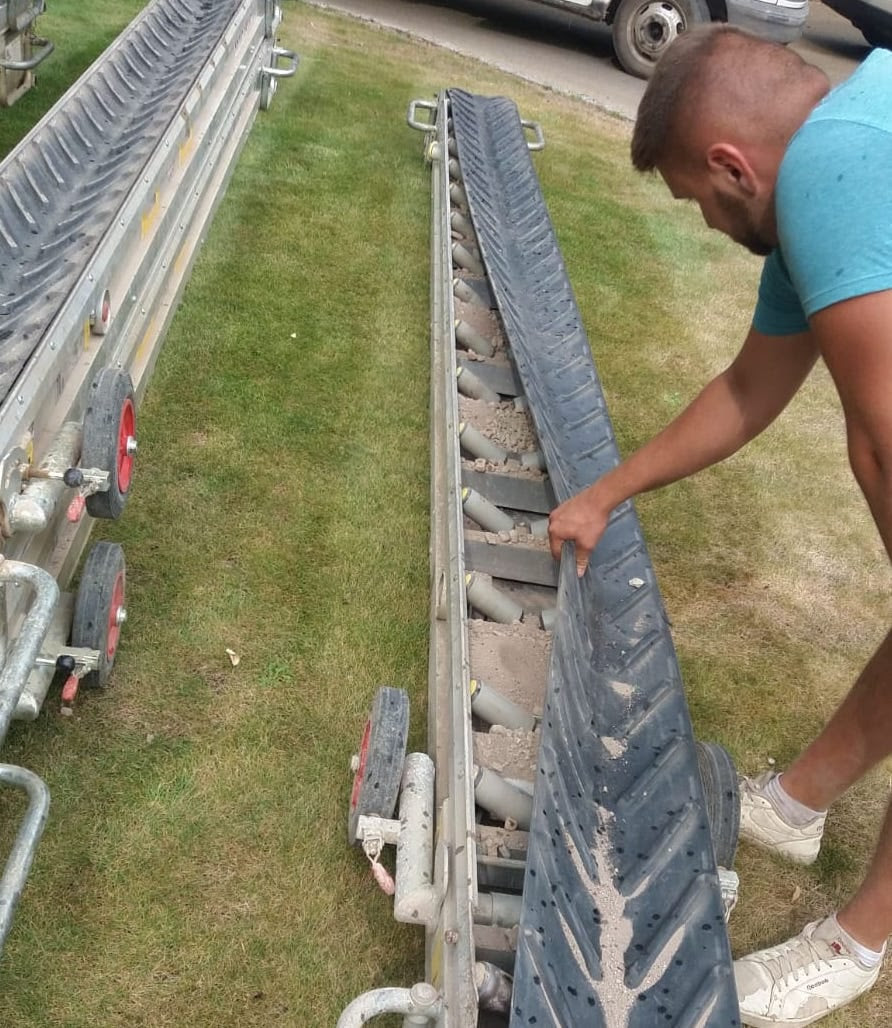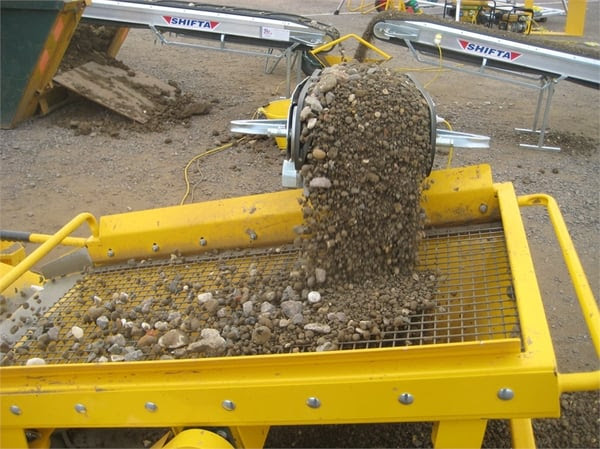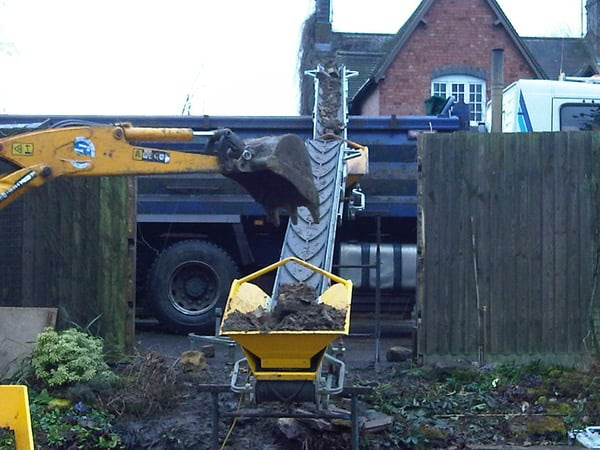How to get the most out of your temporary conveyor belt system
 Whether you’re building a swimming pool, extending your home or tunnelling beneath it to build a basement, one thing’s for sure, you’ve got a lot of earth to shift! You know it’s going to take more than a spade and wheelbarrow to remove it.
Whether you’re building a swimming pool, extending your home or tunnelling beneath it to build a basement, one thing’s for sure, you’ve got a lot of earth to shift! You know it’s going to take more than a spade and wheelbarrow to remove it.
However, you’re also aware of the earth shattering costs associated with buying machinery outright. So naturally, you’re not going to do that!
Luckily for you, these days, renting a digger, dumper or conveyor belt is just as easy as finding a room on AirBnB or booking a taxi with Uber. What a time to be alive!
Now that you’ve decided on hiring a conveyor belt to shift all that soil, next you want to know how to get the most out of your rental. So let’s take a look at some top tips to ensure you get a tonne of efficiency out of your conveyor belt; from the moment it arrives on site, to the second it is collected.
1) Keep your conveyor a clean, mean fighting machine!

It goes without saying, when your machine stops, your project stops. So, the last thing you want is for your conveyor to encounter a fault mid-way through your project. Whilst, machines do sometimes experience faults, for the most part, they can be avoided if operated and maintained correctly.
One of the most common hazards associated with conveyors is that they are subject to clogging. Conveyors which have not been properly cleaned out after long periods of continuous use will not perform as well. Therefore, it’s important to clean out your conveyor on a daily basis to prevent debris and clay clogging up the machine. An unattended issue could eventually cause motor failure and end up delaying your project.
Whilst the Shifta Conveyor is designed for taking heavy loads of debris, – stones and sharp objects can occasionally get caught in the conveyor and strip your belt. Therefore, it’s important to recognise when this happens as it could potentially lead to debris clogging the machine. Keeping an eye out for rips and tears in the conveyor belt will ensure the issue is identified before it develops into a major fault.
2) When loading your conveyor,
Slow and steady wins the race.

Image source: Mace Industry
With all that tonnage of soil to shift, it’s understandable that you want it gone quickly! Naturally then, you might be tempted to load the conveyor as fast as possible. However, if you take this approach you are more likely to spill material and clog the machine.
As with all construction work, a careful and considered approach is always best. Using a bucket to help evenly distribute the load will ensure that you don’t risk overloading the conveyor belt. Remember, slow and steady wins the race!
3) Keep an eagle eye on sharp objects.

Image source: Mace Industry
Conveyor belts are made from rubber. You know what else is made from rubber? Tyres. And we all know what happens to tyres when they come into high-pressure contact with sharp objects… They puncture.
When loading your conveyor, imagine you’re driving a Ferrari down a stoney gravel drive. You wouldn’t want to puncture a set of very expensive tyres now would you? So, I’m assuming you’d be keeping a watchful eye on the track to avoid driving over any sharp rocks. Apply the same logic when loading your conveyor, and be sure to look out for lumps of concrete rubble that have cut pieces of reinforced steel protruding out of it, as this will puncture the belt.
If a puncture does occur and is left untreated, it will likely develop into a tear, which will result in machine failure. We all know how it feels waiting at the side of the road for the AA to turn up and rescue us. To avoid inconveniencing your project in the same fashion, follow this one simple rule; don’t load sharp objects onto the conveyor belt.
4) Avoid disastrous derailments

Image source: Dunlop Conveyor Belting
A conveyor belt is like a train. So long as it’s running on its tracks, it will continue to run in the direction intended. As soon as it comes off its tracks, problems begin to occur.
In the case of the train, the repercussions need no explanation. For a conveyor however, a belt that is not running straight will eventually cause friction against the steel plates of the conveyor. Ultimately, this will lead to the belt tearing along the edge, causing substantial damage to the surrounding steel belt fasteners that keep the belt tracked.
Before any work begins, you should check whether your conveyor belt is correctly tracked. Your specialist provider will show you what to look out for when your conveyor is delivered on site. They will also provide all the correct tools incase you need to make any adjustments during your project. That way, you can ensure no spanner is thrown in the works of completing your project on time.
5) “Movin’ on up, you’re movin’ on out:
time to break free, nothing can stop me.”

We get it, you want all that soil and debris moving out fast! Pivotal to that success, is the continuous operation of your conveyor, and conveyor belts are designed to move large amounts of debris, not lift large amounts of debris.
Although they can take heavy loads when the soil is distributed evenly, they are not designed to be started with material sitting on the conveyor. Why? Because they are “moving” machines, not “lifting” machines. Therefore, avoid starting your conveyor fully loaded as this could risk damaging the conveyor.